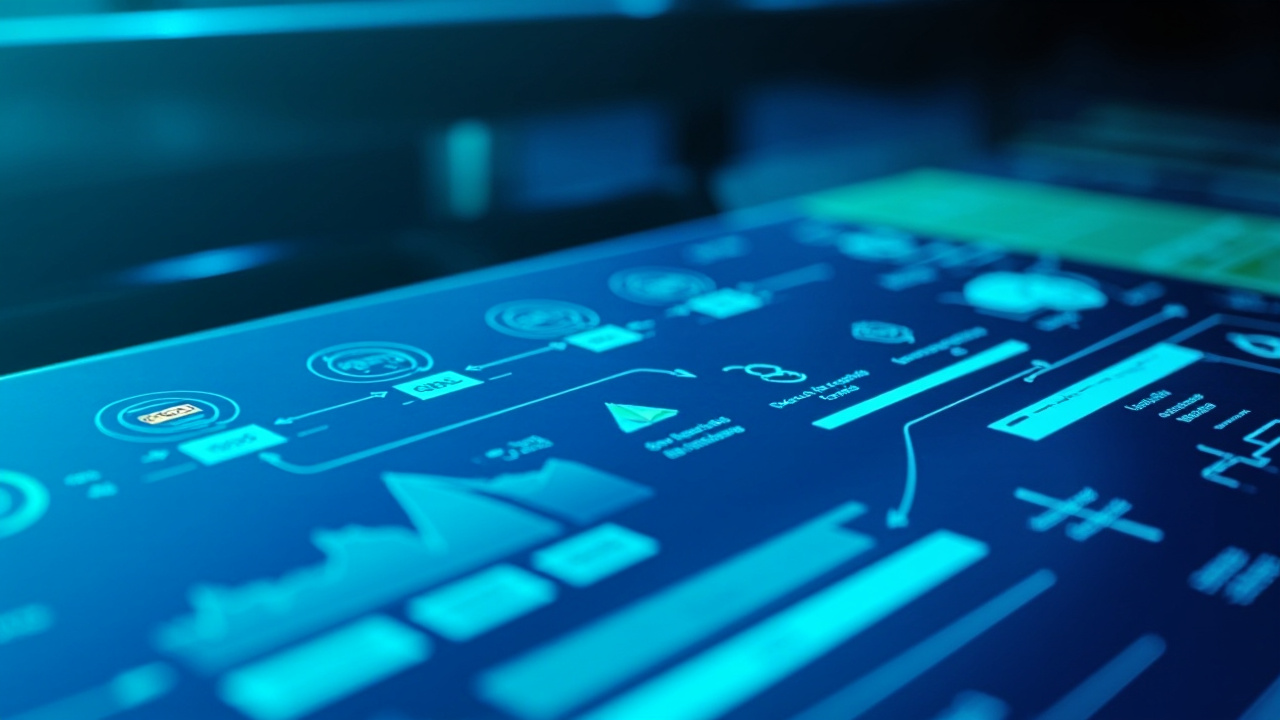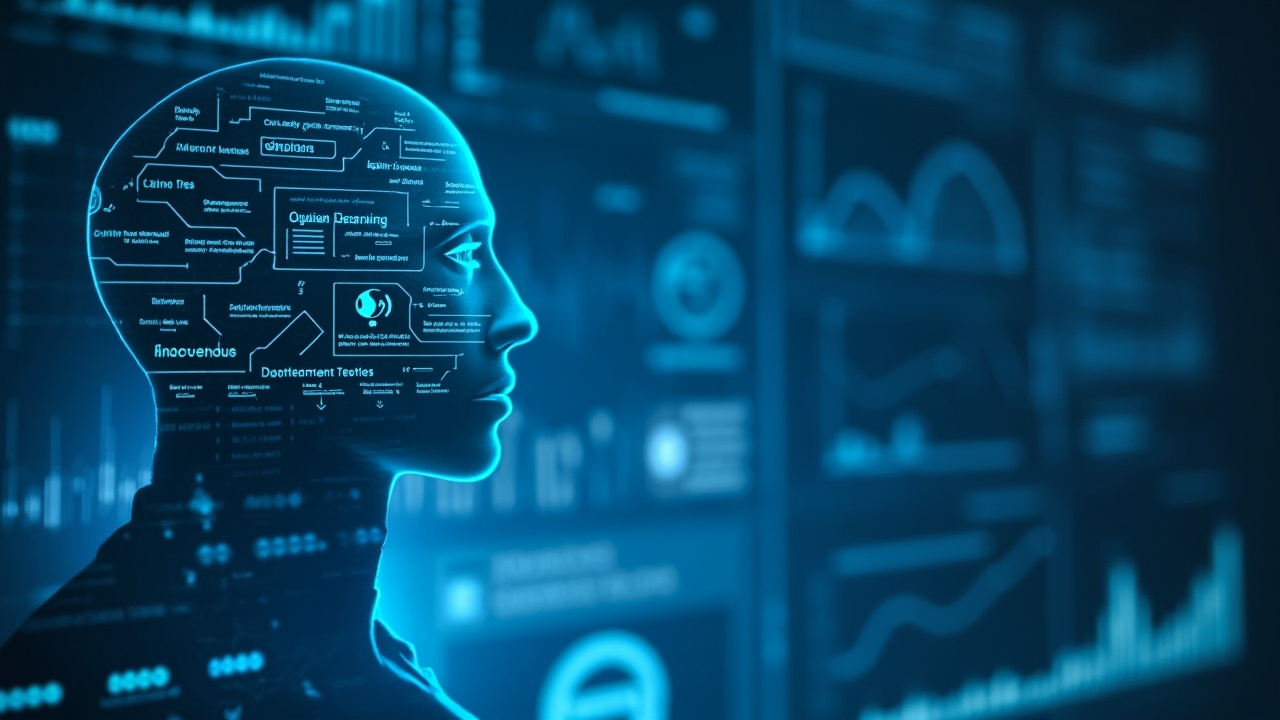In the rapidly evolving world of software development, the demand for high-quality applications has never been more pressing. Developers and testers face mounting pressure to deliver flawless software while keeping pace with accelerated development cycles. Yet, traditional software testing methods often falter under the weight of complexity and speed. This blog post delves deep into the multifaceted realm of software testing, exploring its challenges, innovations, and the transformative role of AI-powered tools like GenQE in reshaping the landscape.
Software testing is the linchpin of software quality assurance. It ensures that applications not only meet user expectations but also maintain optimal performance across diverse environments. However, as software systems grow in complexity, traditional testing approaches struggle to keep up. Long gone are the days when manual testing sufficed; today, automated testing is indispensable for meeting the dual demands of speed and precision.
The introduction of AI into software testing is not merely an upgrade it is a paradigm shift. AI-powered platforms like GenQE offer a glimpse into the future of testing, where efficiency, accuracy, and adaptability converge. This article will explore how AI is revolutionizing software testing, providing insights into its benefits, challenges, and future trends. Readers will gain a comprehensive understanding of how to harness AI tools to enhance software quality while reducing time and cost.
The Evolution of Software Testing: From Manual to Automated

Software testing has undergone significant evolution, transitioning from manual processes to sophisticated automated systems. This section will chart the historical course of software testing, highlighting key milestones and technological advancements.
The Era of Manual Testing
In the early days of software development, testing was predominantly manual. Testers would painstakingly execute test cases, document results, and identify defects. While manual testing provided deep insights into user experiences, it was labor-intensive and prone to human error. The sheer volume of tests required for complex applications often led to incomplete coverage and delayed releases.
Manual testing had its merits, allowing testers to apply human intuition and nuanced judgment. However, as software systems became more intricate, the limitations of manual testing became apparent. The need for faster, more reliable testing methods sparked the advent of automation.
The Rise of Automated Testing
The introduction of automated testing marked a pivotal shift in software quality assurance. Automated tools could execute a myriad of test cases in a fraction of the time required for manual testing. This efficiency not only accelerated release cycles but also improved test coverage and consistency.
Automated testing tools like Selenium and Appium became staples in the tester’s toolkit, offering the ability to perform regression tests, load tests, and more. Yet, automation was not without its challenges. Test scripts required constant maintenance, especially when user interfaces changed. Enter GenQE, an AI-powered platform that offers self-healing capabilities to address this very issue.
Bridging the Gap: AI-Powered Testing
AI-powered testing represents the next frontier, bridging the gap between manual and automated testing. Tools like GenQE leverage artificial intelligence to enhance test automation, providing capabilities such as AI-driven test generation and smart test execution. By analyzing software requirements and user behavior, AI can generate comprehensive test cases that improve coverage and efficiency.
“AI-powered testing is not merely an upgrade it is a paradigm shift.”
In summary, the evolution of software testing reflects the industry’s quest for efficiency and accuracy. As complexity increases, AI-powered tools offer a promising solution to the challenges of traditional methods.
Understanding the Challenges of Traditional Testing Methods

Despite the advancements in software testing, traditional methods continue to face significant challenges. This section examines these challenges and explores potential solutions, including the role of AI.
Complexity and Scale
Modern software applications are complex systems that must function seamlessly across various platforms, devices, and environments. Traditional testing methods often struggle to provide comprehensive coverage, leading to overlooked defects and performance issues.
AI-powered tools like GenQE address this challenge by offering comprehensive test coverage across multiple platforms, including web, mobile, APIs, and cloud environments. By ensuring applications function seamlessly, these tools reduce the likelihood of defects slipping through the cracks.
Resource Constraints
Testing is a resource-intensive process, requiring skilled personnel, time, and financial investment. Traditional methods often demand extensive manual effort, which can strain organizational resources and delay development cycles.
AI-driven platforms optimize resource allocation by automating repetitive tasks and minimizing manual intervention. For example, GenQE’s smart test execution prioritizes test cases based on risk analysis, ensuring critical areas are tested first and resources are efficiently utilized.
Maintenance Burden
One of the persistent challenges of automated testing is the maintenance burden. Test scripts frequently break when user interfaces change, necessitating constant updates and revisions. This maintenance overhead can offset the benefits of automation.
GenQE’s self-healing automation capabilities provide a solution by automatically adjusting test scripts when UI elements change, reducing maintenance efforts and ensuring continuity in testing processes.
“AI-driven platforms optimize resource allocation by automating repetitive tasks and minimizing manual intervention.”
In conclusion, traditional testing methods face challenges related to complexity, resource constraints, and maintenance. AI-powered tools offer innovative solutions to these challenges, transforming the testing landscape.
The Role of AI in Transforming Software Testing

Artificial intelligence is revolutionizing how software testing is conducted, offering unprecedented capabilities and efficiencies. This section dives into the specific roles AI plays in enhancing the software testing process.
AI-Driven Test Generation
One of the most significant contributions of AI to software testing is AI-driven test generation. By analyzing software requirements, user behavior, and historical data, AI can generate comprehensive test cases that improve coverage and efficiency. This capability reduces the dependency on manual test case design and ensures that all aspects of an application are thoroughly tested.
GenQE exemplifies this feature by leveraging AI to automate test case creation, allowing teams to focus on high-impact testing activities rather than mundane tasks. This approach not only enhances coverage but also accelerates the testing process, enabling faster time to market.
Intelligent Test Execution and Prioritization
AI enhances testing efficiency through intelligent test execution. By prioritizing test cases based on risk analysis, AI ensures that critical areas of an application are tested first. This targeted approach optimizes testing efforts and increases the likelihood of identifying high-impact defects early in the development cycle.
With GenQE, teams can rely on AI-driven insights to make informed decisions about test execution, ultimately enhancing the quality and reliability of software releases.
Proactive Defect Detection
Detecting defects early in the development cycle is crucial for maintaining software quality. AI-powered platforms like GenQE utilize machine learning to identify patterns and anomalies in test results, enabling proactive defect detection.
“Detecting defects early in the development cycle is crucial for maintaining software quality.”
This proactive approach prevents critical issues from reaching production, reducing the risk of costly post-release fixes and enhancing user satisfaction.
In summary, AI plays a transformative role in software testing by automating test generation, optimizing test execution, and enabling proactive defect detection. These capabilities position AI as a vital component of modern software quality assurance.
How AI-Powered Tools Enhance Developer Productivity

The integration of AI into software testing not only improves software quality but also enhances developer productivity. This section explores the impact of AI-powered tools on development teams.
Reducing Manual Effort
One of the primary benefits of AI-powered tools is the reduction of manual effort required for testing. By automating repetitive tasks, AI allows developers to focus on more innovative and value-added activities. This shift in focus leads to increased productivity and job satisfaction.
GenQE, for instance, automates the creation, execution, and analysis of test cases, freeing up developers to concentrate on refining application features and improving user experiences.
Accelerating Development Cycles
AI-driven testing tools accelerate development cycles by streamlining the testing process. With faster test execution and reduced maintenance burdens, development teams can release high-quality software more frequently and confidently.
“AI-driven testing tools accelerate development cycles by streamlining the testing process.”
This acceleration is crucial for organizations aiming to maintain a competitive edge in the fast-paced software industry. By integrating GenQE into their workflows, teams can achieve faster time to market without compromising on quality.
Enhancing Collaboration and Communication
AI-powered platforms facilitate better collaboration and communication among development teams. With advanced analytics and reporting features, tools like GenQE provide detailed insights into software quality trends and testing progress.
These insights empower teams to make data-driven decisions and foster a culture of continuous improvement. By sharing information transparently, development teams can work more cohesively and align their efforts towards common quality goals.
In conclusion, AI-powered tools enhance developer productivity by reducing manual effort, accelerating development cycles, and fostering collaboration. These benefits underscore the value of incorporating AI into software testing processes.
Case Studies: Real-World Applications of AI in Software Testing

To illustrate the impact of AI on software testing, this section presents real-world case studies of organizations that have successfully integrated AI-powered tools into their testing processes.
Case Study 1: E-Commerce Platform
An e-commerce platform faced challenges with maintaining test coverage across its rapidly evolving website. The traditional testing approach was time-consuming and often resulted in missed defects.
By implementing GenQE, the platform automated test generation and execution, significantly reducing manual effort. The AI-driven tool provided comprehensive coverage across web and mobile platforms, ensuring a seamless user experience. As a result, the platform achieved faster release cycles and improved customer satisfaction.
Case Study 2: Financial Services Firm
A financial services firm needed to ensure the reliability and security of its applications in a highly regulated environment. Traditional testing methods were inadequate for meeting stringent compliance requirements and rapid development timelines.
With GenQE, the firm leveraged AI-driven test prioritization and defect detection to enhance testing efficiency. The platform’s seamless integration with the firm’s DevOps pipeline allowed for continuous testing and early defect identification. This proactive approach led to a significant reduction in post-release issues and regulatory compliance risks.
Case Study 3: Healthcare Application
A healthcare application provider sought to improve the quality and performance of its telehealth platform. The complexity of the application and the need for cross-platform compatibility posed significant testing challenges.
GenQE’s comprehensive test coverage and self-healing automation capabilities addressed these challenges. By automating test case creation and execution, the provider improved test accuracy and reduced maintenance efforts. This resulted in a more reliable telehealth platform, enhancing patient care and satisfaction.
“Real-world case studies highlight the transformative impact of AI-powered tools on software testing.”
These case studies demonstrate the tangible benefits of integrating AI-powered tools like GenQE into software testing processes. Organizations across various industries have realized improved quality, efficiency, and user satisfaction through AI-driven testing solutions.
Future Trends in AI and Software Testing

As AI continues to evolve, its impact on software testing is expected to grow. This section explores future trends and potential developments in AI-powered testing.
Increased Adoption of AI-Powered Tools
The adoption of AI-powered testing tools is likely to increase as organizations recognize their benefits. As AI technology becomes more accessible and cost-effective, even small and medium-sized enterprises will integrate AI into their testing strategies.
Enhanced AI Capabilities
Future AI-powered testing tools will feature enhanced capabilities, such as improved natural language processing and predictive analytics. These advancements will enable more intuitive test case creation and more accurate defect predictions.
Integration with Emerging Technologies
AI-powered testing tools will increasingly integrate with emerging technologies such as blockchain, IoT, and edge computing. This integration will enable comprehensive testing of complex, decentralized systems and ensure their reliability and security.
Focus on Ethical AI
As AI becomes more prevalent in software testing, ethical considerations will gain prominence. Organizations will prioritize the development of ethical AI practices, ensuring that AI-driven testing tools are transparent, unbiased, and accountable.
“Future AI-powered testing tools will feature enhanced capabilities, such as improved natural language processing and predictive analytics.”
In summary, the future of AI in software testing is promising, with increased adoption, enhanced capabilities, and integration with emerging technologies on the horizon. These trends will continue to shape the landscape of software quality assurance.
Conclusion: Embracing the Future of Software Testing with AI

The landscape of software testing is undergoing a profound transformation, driven by the integration of AI-powered tools. As traditional methods grapple with the complexities of modern software development, AI offers a path forward, enhancing efficiency, accuracy, and adaptability.
AI-powered platforms like GenQE exemplify the potential of AI in revolutionizing software testing. By automating test generation, execution, and defect detection, these tools empower development teams to deliver high-quality software with greater speed and confidence.
As organizations embrace AI-driven testing solutions, they position themselves at the forefront of innovation, ready to meet the challenges of an ever-evolving software landscape. The future of software testing is here, and it is intelligent, efficient, and transformative.
For those seeking to enhance their software quality assurance processes, exploring AI-powered tools like GenQE offers a promising opportunity to improve efficiency, accuracy, and user satisfaction.
Discover More Innovative Solutions
Want to learn more about the tools and technologies discussed in this article? Explore how these innovations can be tailored to your specific needs and workflow requirements.
Our team of experts is available to answer your questions and provide personalized insights into how modern solutions like GenQE can address your specific challenges.
If the link above does not work, please visit: https://calendly.com/dm-csimplifyit/30min?month=2025-05